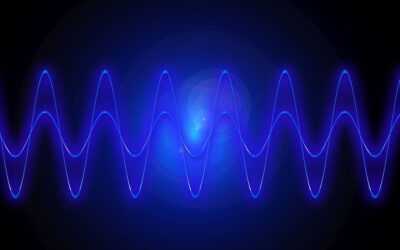To understand the behavior of tiny, microscopic entities such as elementary particles, atoms, and even molecules, it is necessary to apply the mind-bending principles of quantum mechanics. In this realm, physics takes on bizarre properties necessary to unravel the perplexing behaviors of the Universe at this level.
In stark contrast, the macroscopic world we navigate daily adheres faithfully to the more comforting and intuitive laws of classical physics, which serve as approximations to much more complex quantum laws. These classical laws, while impressively accurate for our everyday experiences, merely graze the surface of the quantum mechanics that orchestrates the Universe at its smallest scales.
However, an interesting idea has begun to take root, where many physicists believe that although the classical description of large physical systems work well, tiny deviations from classical predictions that happen on tiny scales accumulate over time, eventually resulting in the breakdown of the classical description.
This hypothetical phenomenon is known as quantum breaking, a captivating concept that challenges our understanding of the boundaries between the classical and quantum worlds.
“We know that at the fundamental level the world is quantum,” explained Sebastian Zell, a postdoctoral researcher at the Université Catholique de Louvain in Belgium, in an email. “Therefore, any classical description is only an approximation — if you look hard enough, you’ll see some signs of ‘quantumness’.
“However, a classical description yields extremely accurate results in many circumstances,” he continued. “In fact, classical physics works so well that quantum effects were only discovered a bit more than 100 years ago! So, why don’t we observe the full breakdown of the classical approximation in our everyday life?”
Studying quantum breaking
Given the vast majority of objects around us are macroscopic, understanding why such a breakdown doesn’t occur when we interact with them is important. To find this out, Zell and his colleague Marco Michel from Ben-Gurion University of the Negev in Israel conducted a theoretical study of a particular quantum system similar to a one-dimensional gas made up of atoms for which the level of mathematical frameworks used to describe many large systems is almost the same.
“In our study, we construct (we’re theoreticians, so construct means ‘write down’) a simple model to study quantum breaking,” said Zell. “Then we use a computer program that we’ve developed to calculate how the system evolves in time. Finally, we compare the outcome to the classical approximation and determine if and when the two deviate significantly.”
After repeating this procedure for many different model parameters, such as the number of atoms and the strength of their interactions with each other, the team was able to deduce two important features of quantum breaking.
“First, we determine under which conditions quantum breaking takes place at all,” Zell explained. “We find that the classical description never breaks down unless the strength of interaction is comparatively strong. This sheds light on the long-standing question why we don’t observe quantum breaking in everyday life.
“Second, we determine how the quantum break time, which is the timescale after which quantum breaking takes place, depends on the different parameters of the systems. In particular, it’s known that the quantum break-time increases with the number of particles: the more macroscopic a system is, the longer the classical approximation stays valid.
“However, we observe that this increase of the quantum break-time with the particle number is comparatively slow. In short, one could say that quantum breaking does not take place at all in typical situations. If it happens, however, it can be surprisingly fast.”
Since the study was purely theoretical, their results require experimental confirmation, which could be very difficult to obtain. The problem is that in most of the macroscopic systems we deal with, atoms and molecules interact weakly, so quantum breaking is not expected to occur. In addition, in real physical bodies the number of particles is very large (a liter of air, for example, contains more than 1022 atoms), so the quantum break time for them is expected to be very long.
However, the physicists believe that there are certain systems whose study may help confirm the correctness of their conclusions in the near future.
“Models of the type that we are studying can be implemented in Bose-Einstein condensates — such condensates are responsible, for example, for the emergence of superconductivity,” said Zell. “I’ve already started talking to experimentalists in this area, and we’re currently trying to find a concrete system that is suitable for laboratory investigation. If this works out, it would be really cool and could lead to results in few years.”
Resolving the black hole radiation paradox
In addition to improving our understanding of physics as a whole, the team’s research could have a significant impact on our knowledge of some of the most mysterious celestial bodies in the Universe: black holes.
Currently, there are significant gaps in our understanding of the physics of these objects, which have led to unsolved paradoxes, one of which is associated with the hypothetical radiation of black holes.
In the 1970s, British physicist Stephen Hawking predicted that black holes should generate electromagnetic waves, but that this radiation, called Hawking radiation, wouldn’t carry any “information” about the objects swallowed by the black hole. However, this violates one of the fundamental postulates of quantum theory that states that information can’t just disappear into thin air — this is known as the principle of unitarity or conservation of information.
“Quantum breaking can provide the answer,” said Zell. “Hawking’s calculation is only valid as long as the black hole can be described classically. So once the black hole quantum breaks, which means that the classical description used by Hawking is no longer valid, it’s possible that some yet unknown phase of emission takes over, which may allow for the release of information. Our results indicate that quantum breaking takes place early enough to avoid any loss of information.
“Of course, this is only the very first step towards understanding information processing in black holes,” he continued. “So far it’s completely unclear what such a second information-releasing phase of evaporation might look like.”
The scientists note that the understanding of quantum breakdown is still far from complete, and extensive future research is needed both to understand the quantum breakdown of familiar macroscopic objects and to resolve the paradox of black hole radiation.
“Up until now, we have studied when quantum breaking takes places, that is after what timescale the classical description breaks down,” concluded Zell. “As a next step, we are currently investigating signatures of quantum breaking, that is in what way the quantum system deviates from the classical description.
“Among others, this has important implications for black holes: So far, it has remained completely unclear what a black hole evolves to after its classical description has broken down. Finding indications about what a ‘broken’ black hole might look like is a necessary prerequisite in order to search for them using cosmological observations.”
Reference: Marco Michel and Sebastian Zell, The Timescales of Quantum Breaking, Progress of Physics (2023). DOI: 10.1002/prop.202300163
Feature image credit: Michael Dziedzic on Unsplash

















